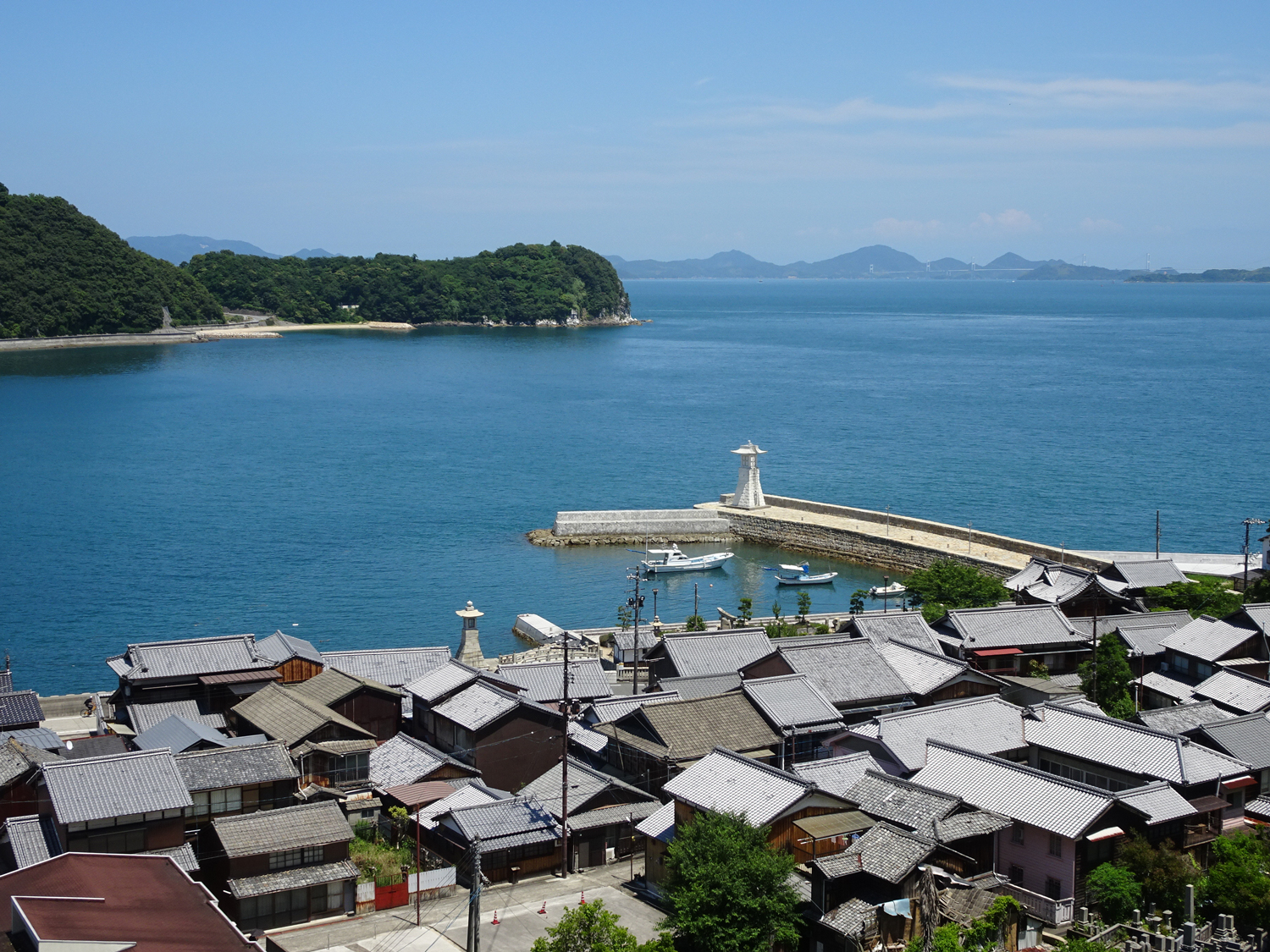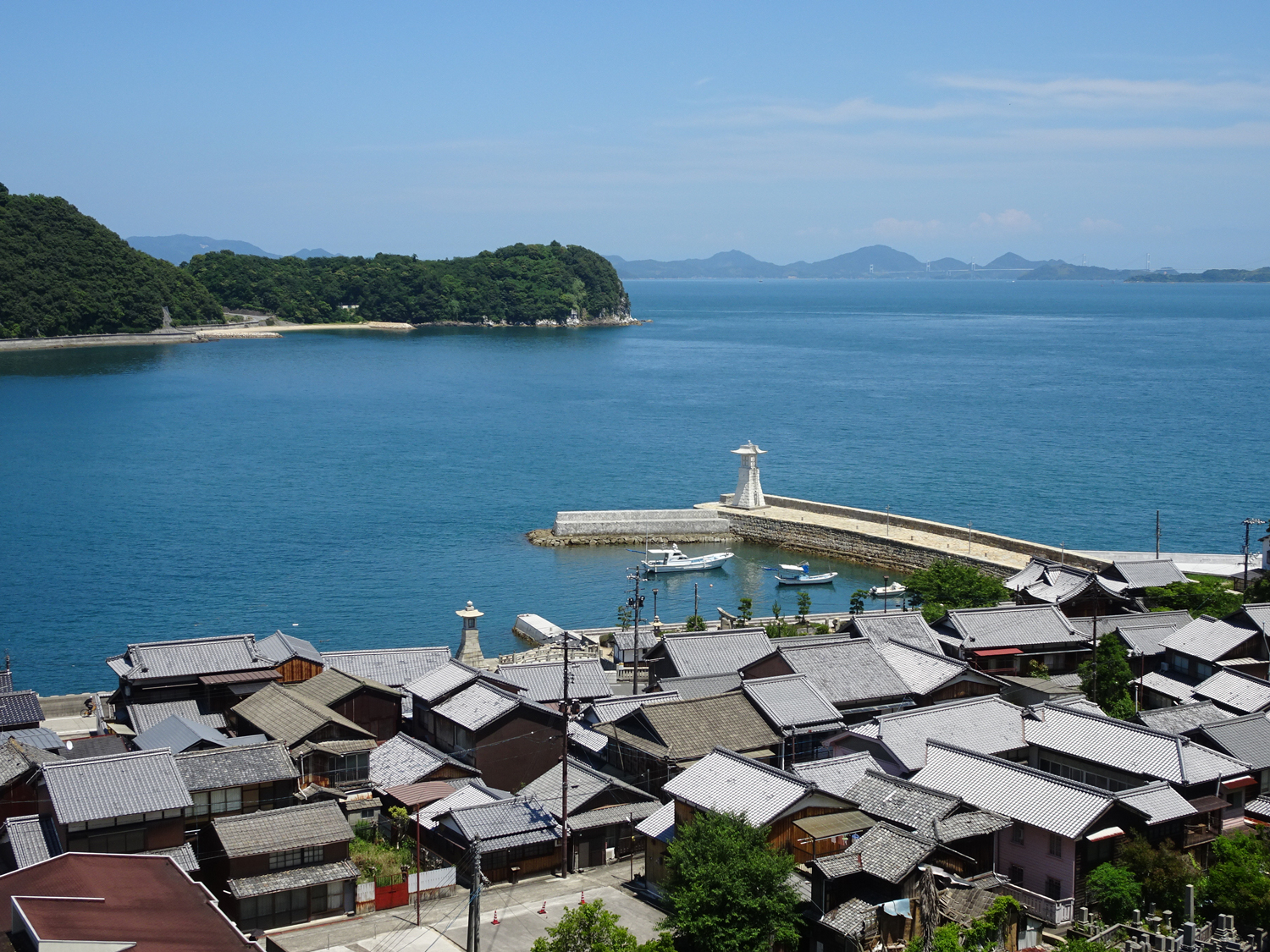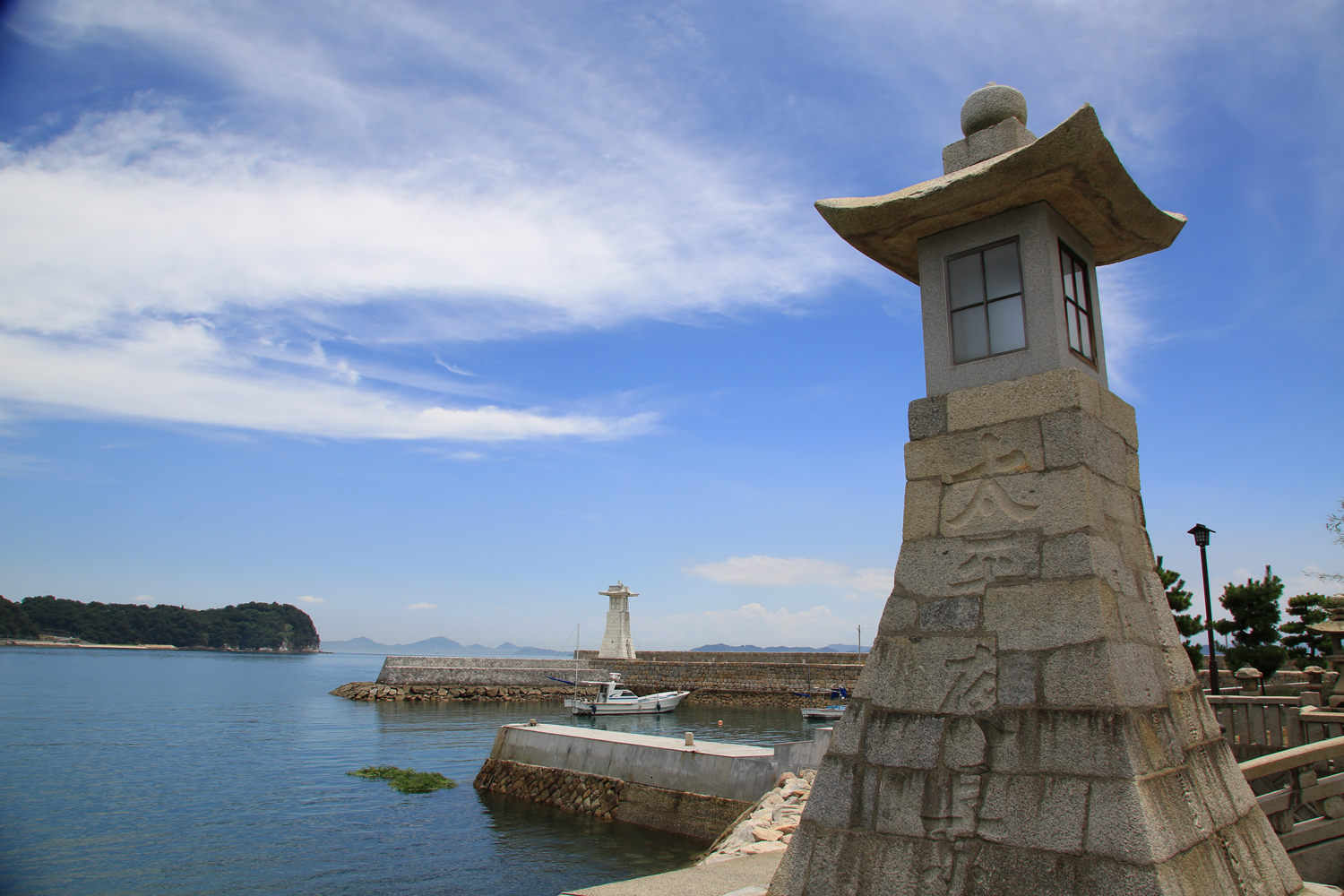千砂子波止と高燈籠 Chisago Breakwater and Lighthouse
19世紀に入ると、御手洗の港町としての優位性は、競合の港の増加によって脅かされるようになった。同時に航路も変化され、かつては関東の南側にあった船が、四国の北岸に沿って港から港へと移動するようになり、北東からではなく、南東から御手洗に接近するようになった。この新しい航路を利用する船を誘致するために、御手洗港の南側に防波堤を設けた。この大規模な工事は、広島藩からの資金調達が度々遅れ、その数年前に合法化された地元の宝くじで資金を調達して、1829年にようやく完成した。
千砂子波止は全長120メートルで、中四国地方最大の防波堤で、当時としては技術的にも高度なものであった。城壁の築城にも使われた「牛蒡積み(ごぼうづみ)」と呼ばれる方法で、大きな石をしっくいを使わずに積み上げている。防波堤の外側には、波の衝撃を和らげるために曲面の壁を設けている。1830年には、御手洗港の繁栄と港を守るために、千砂子波止の守護神として住吉神社が建立された。この防波堤は、多くの台風にも耐え、現在も現役で使用されている。

この防波堤の先端には、御手洗に近づく船を誘導するための灯台がいくつも立っていた。最初の灯台は木造であったが、度重なる暴風雨で大きな被害を受けた。1832年に金子商家の資金で、より頑丈な石造りの灯台が建てられた。この灯台は高さ6メートルで、伝統的な高燈籠を模して建てられた。この高燈籠は1879年まで使用されていたが、住吉神社への参道に移設された。現在は防波堤の先端にコンクリート製の新しい灯台が建っている。これは、元の石造灯台の建築様式を再現して建てられた。
防波堤に並ぶ大きな石は、船を固定するためのもので、漢字の数字が彫られている。防波堤の足元の石には、亀と鶴が彫られている。どちらの動物も繁栄と長寿の象徴であり、御手洗が港町として末永く繁栄してほしいという願いが込められている。これらの石に触れると幸運が訪れると言われている。千砂子波止と高燈籠は、御手洗の港町としての過去と現在を象徴する重要なものであり、江戸時代(1603–1867)の面影を今に伝えている。

During the nineteenth century, Mitarai’s dominance as a port town was threatened by the development of an increasing number of rival harbors across the region. The dominant sea route also changed, and ships that once hopped from port to port along the southern coast of Honshu instead followed the northern coast of Shikoku, approaching Mitarai from the southeast rather than the northeast. To attract ships sailing this new route, Mitarai added a breakwater on the south side of its harbor. Funding from the Hiroshima domain for this large-scale construction project was repeatedly delayed, and Mitarai finally completed the breakwater in 1829 by funding it through a locally organized lottery, which had been legalized just a few years before.
The Chisago Breakwater is 120 meters in length, the largest breakwater in the Chūgoku region. The breakwater was also technologically advanced for its time: the builders employed gobōzumi, a method used to build castle ramparts, in which large, uncut stones are stacked together without mortar. A curved wall was added to the outside of the breakwater to reduce the impact of the waves. In 1830, Sumiyoshi Jinja Shrine was built as a guardian shrine for the breakwater to add another dimension of protection for the harbor. The well-engineered breakwater remains in use today, having withstood the test of time and many typhoons.

A number of lighthouses have stood at the tip of the breakwater to guide ships approaching Mitarai. The first lighthouse was a wooden structure, but it was badly damaged by a series of storms. In 1832, a stronger, stone lighthouse funded by the Kaneko merchant family replaced the wooden one. The new lighthouse was 6 meters high and built in the traditional stone-lantern style. This stone lighthouse remained in use until 1879, when it was relocated to the path leading to Sumiyoshi Jinja. In its place, a concrete lighthouse now occupies the tip of the breakwater. It was built in a style that replicates the architecture of the original stone lighthouse.
The large stones lining the breakwater are used for securing ships, and they have kanji numerals carved into them. At the foot of the breakwater wall, a turtle and a crane have been carved into the stone. Both animals are symbols of prosperity and longevity, and together they express hope for Mitarai’s prosperity as a port town for many years to come. Touching these carved stones is said to bring good fortune. The Chisago Breakwater and its lighthouse are important symbols of Mitarai’s past and present, and the view over the harbor still looks much as it did during the Edo period (1603–1867).


